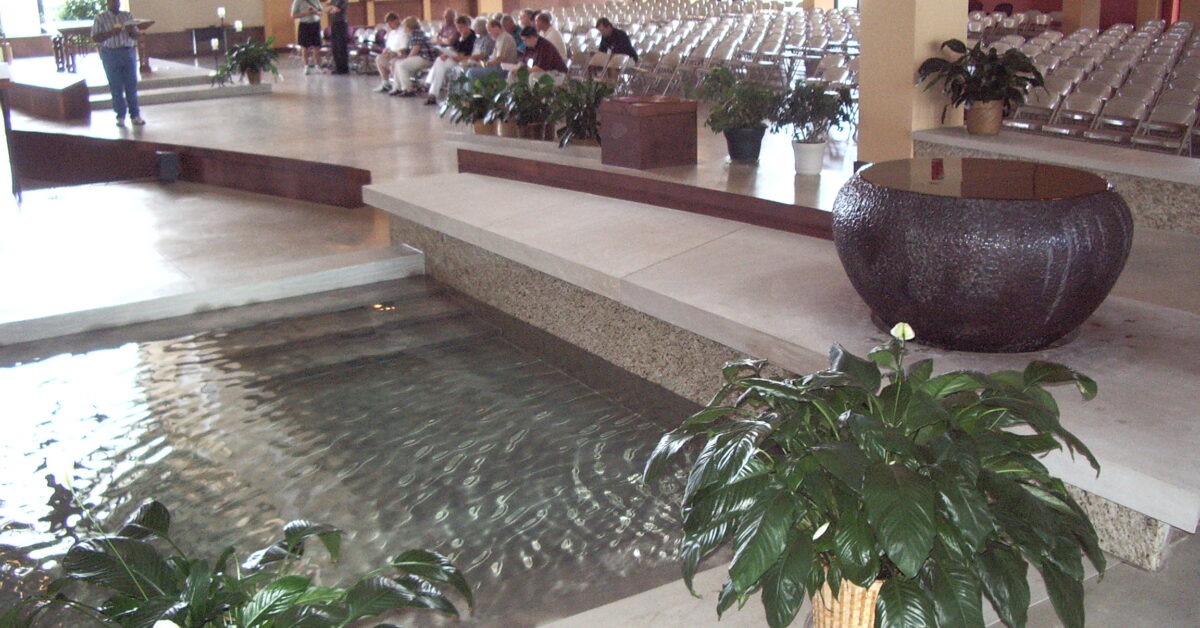Slow Walking: The Easter Vigil is Not the Place to Start!
As announced last week, in this fall series of blog posts we aim to help pastors and other church leaders who want to change or refresh their congregation’s adult “new member class.” We believe that moving toward an adult faith formation model (reflecting the historic catechumenate practices of the church) provides the most enriching and formative approach. However, movement toward an adult faith formation model often takes time. It entails a significant shift in priorities and direction. While one might long for a quick fix to incorporating adults into the Body of Christ, a quick fix is a flash in the pan. There are no quick fixes. One quick fix might be the expectation that restoration of the Easter Vigil (see LSB Altar Book, pp. 529-51)—the early church service on Holy Saturday of the Triduum, the Great Three Days, that brought to fulfillment the catechumenal preparations of those to be baptized and confirmed—would lead to a more vigorous adult faith formation process. However, the Easter Vigil often operates on its own, independent of any catechumenate. Rather than being perceived as some form of magical wand to renew faith formation, the Easter Vigil should be perceived as the culmination of a congregation’s investment in a process of bringing new Christians to baptism. The Easter Vigil serves the catechumenate, not the other way around.
Rather, focus on the waters of baptism is what reforms a congregation’s adult membership process. Paul Hoffman describes this process of transformation at Phinney Ridge Lutheran Church in Seattle, WA, where he was pastor for many years, in his book Faith Forming Faith. He writes:
“When we began the practice of forming new Christians for baptismal living, not many congregations believed that their communities of faith were congregations that could benefit from such a ministry. But the creeping tide of secularism, the growing mistrust of institutionalized faith, and the general decline of church across the country all collide to make a process of faith formation a valuable option to consider. Our catechumenal story is the story of how, through the baptismal preparation of new Christians, we as a congregation are formed in faith and strengthened for mission in the world, over and over again” (5).
Focusing on baptism means focusing on how God makes Christians and how congregations serve as the agents for God the Creator to do this wondrous making. Rather than assuming that the Easter Vigil is a magical wand for renewing adult faith formation, Hoffman offers ideas and poses questions about the sacraments at the end of Faith Forming Faith that help determine whether baptism (and the Lord’s Supper) function as true means of grace and are the lifeblood of congregational life, ministry, and mission. Here are some of these ideas and questions:
- A congregational Bible study on the sacraments examining current parish practice
- Congregational prayer that God’s grace would be revealed and given through the sacraments
- Consider present baptismal practice, especially whether and how often they are celebrated in weekly worship? And how many adults are baptized and confirmed each year?
- Considering ways in which baptismal celebrations can be focused more on the entire assembly and each member called to responsibility as part of the baptismal body.
- Discuss how baptism and the Lord’s Supper are forming the teaching of the congregation’s children and youth.
- Where and how is the font used? Is it filled with water at all times? How is it used symbolically?
- How can baptism and the eucharist be celebrated in symbolically full and enriching ways? (see pp. 88-90)
Beginning with ideas and questions such as these won’t provide a quick fix. But they will begin to shift congregational focus and self-understanding toward the renewal of adult formation and the hard work that needs to be done to realize that renewal. In the end, your Easter Vigil will thank you!
